Abstract
The recent expansion of the nation's supply of physicians has brought with it dramatic increases in the number of women entering medical school and practice. This paper provides an overview of the literature on women in medicine and synthesizes major findings on the differences between male and female physicians in terms of specialty choice, productivity, income, geographic location of practice, practice settings and types of patients, leadership within the profession, and other characteristics. Between 1981 and the year 2000, the total supply of physicians in practice is expected to increase by 27 percent; the number of women in practice is expected to increase by 153 percent. By the year 2000, one physician in five will be a woman. The fairly limited research on gender-related differences indicate that women tend to cluster in a few specialties (pediatrics, psychiatry, pathology, preventive medicine, physical medicine and rehabilitation, and anesthesiology), many of which are specialties expected to have fewer physicians than needed nationally by 1990. Women have also been shown to have lower productivity and lower income than male physicians, to choose urban locations more frequently, to prefer salaried and institutional settings more often, to serve different types of patients, and to belong to medical organizations less frequently. From the standpoint of public policy, the differences between the characteristics of male and female physicians have mixed implications. For example, the choice of specialty and lower productivity of women could lessen the negative impact of future physician surpluses. On the other hand, a preference for urban practice could exacerbate geographic maldistribution problems.(ABSTRACT TRUNCATED AT 250 WORDS)
Full text
PDF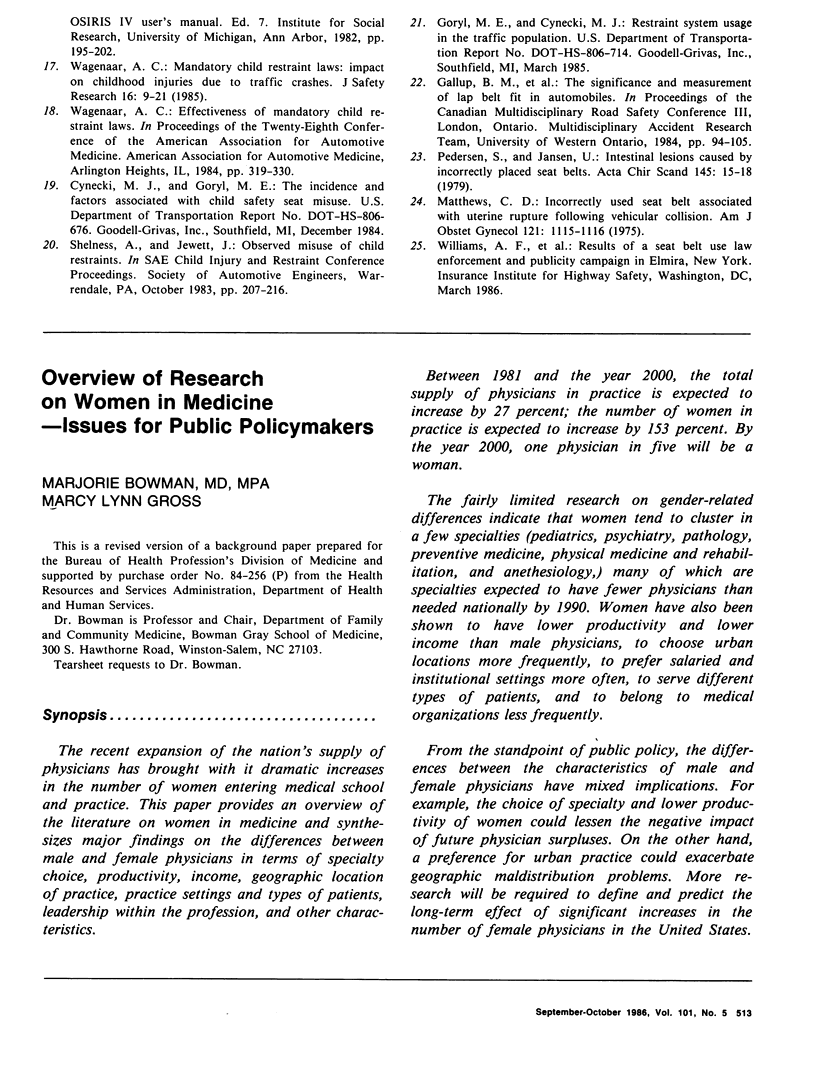
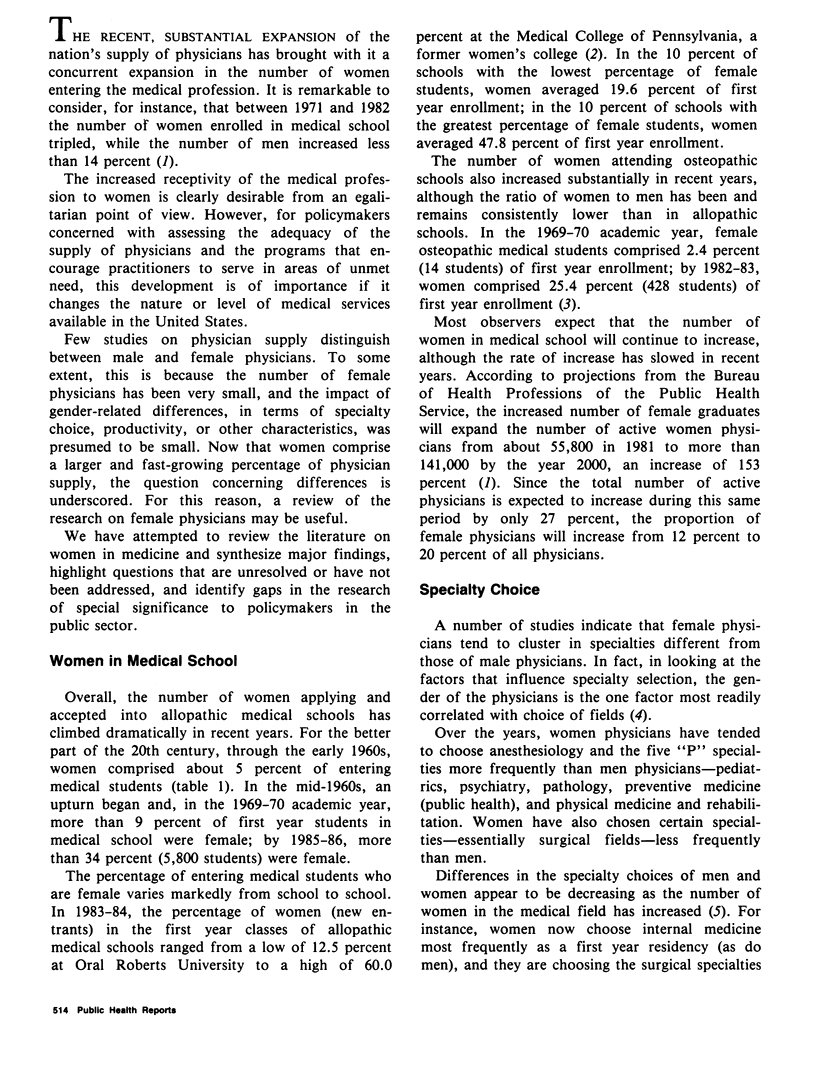
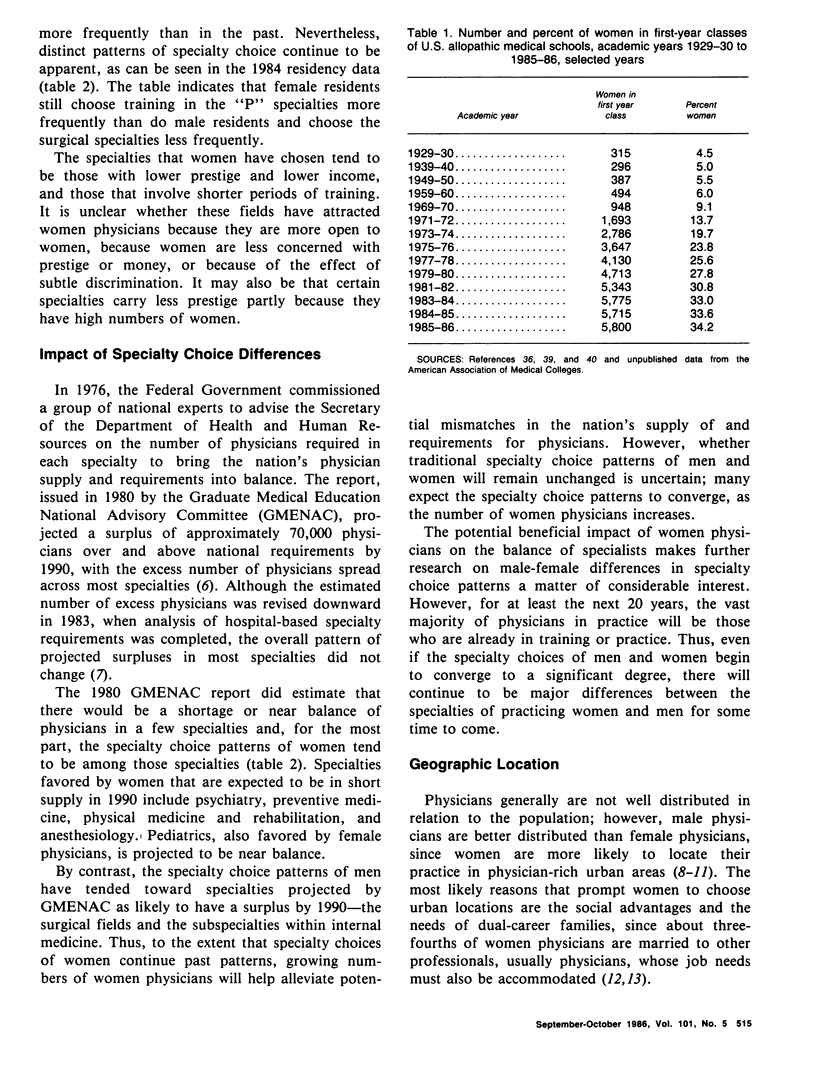
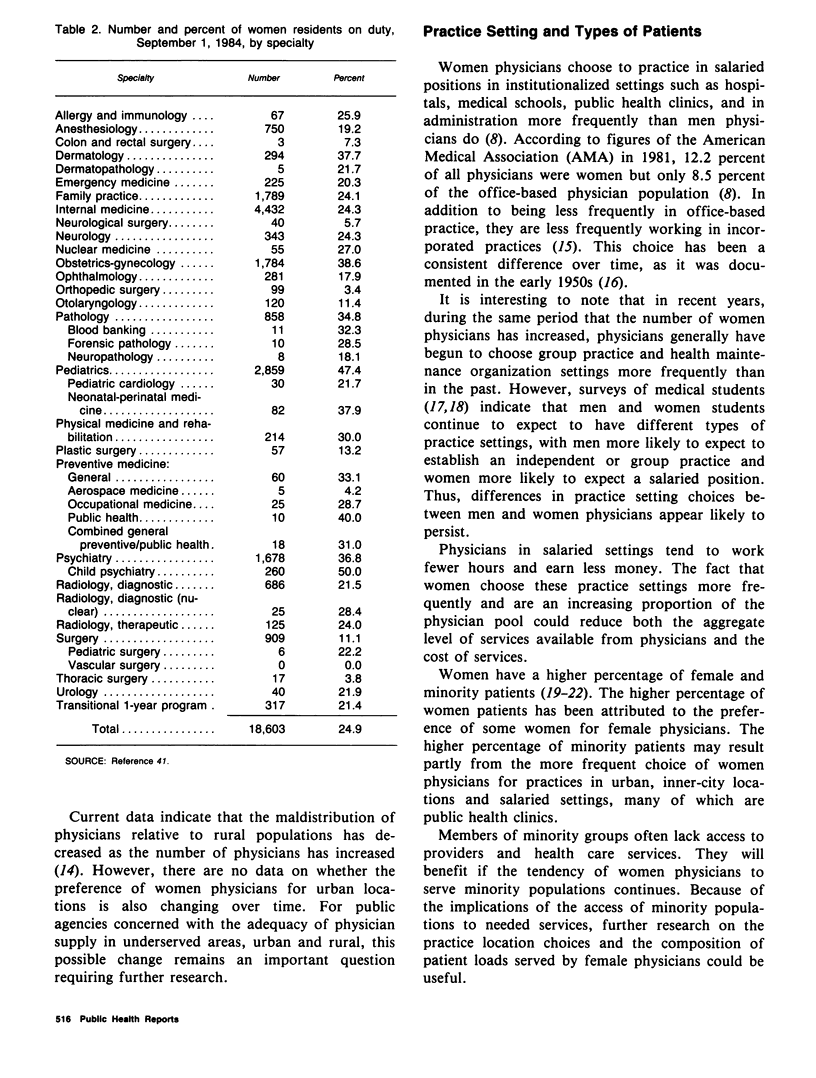
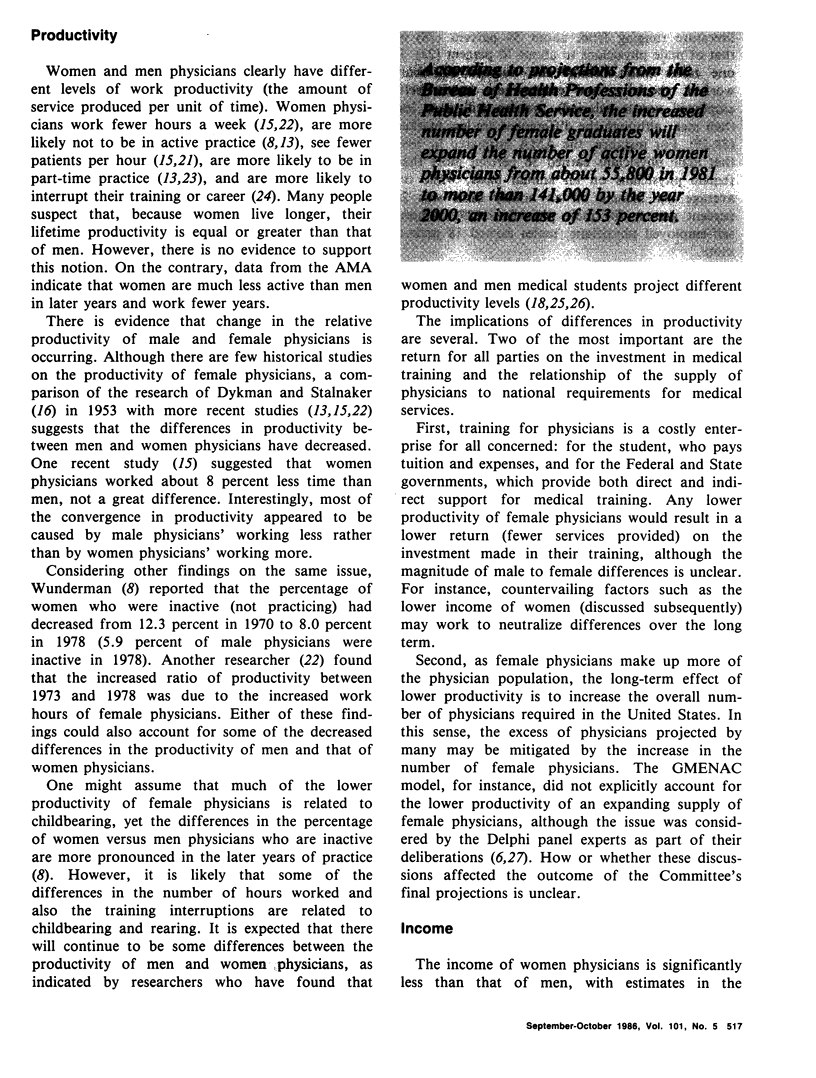
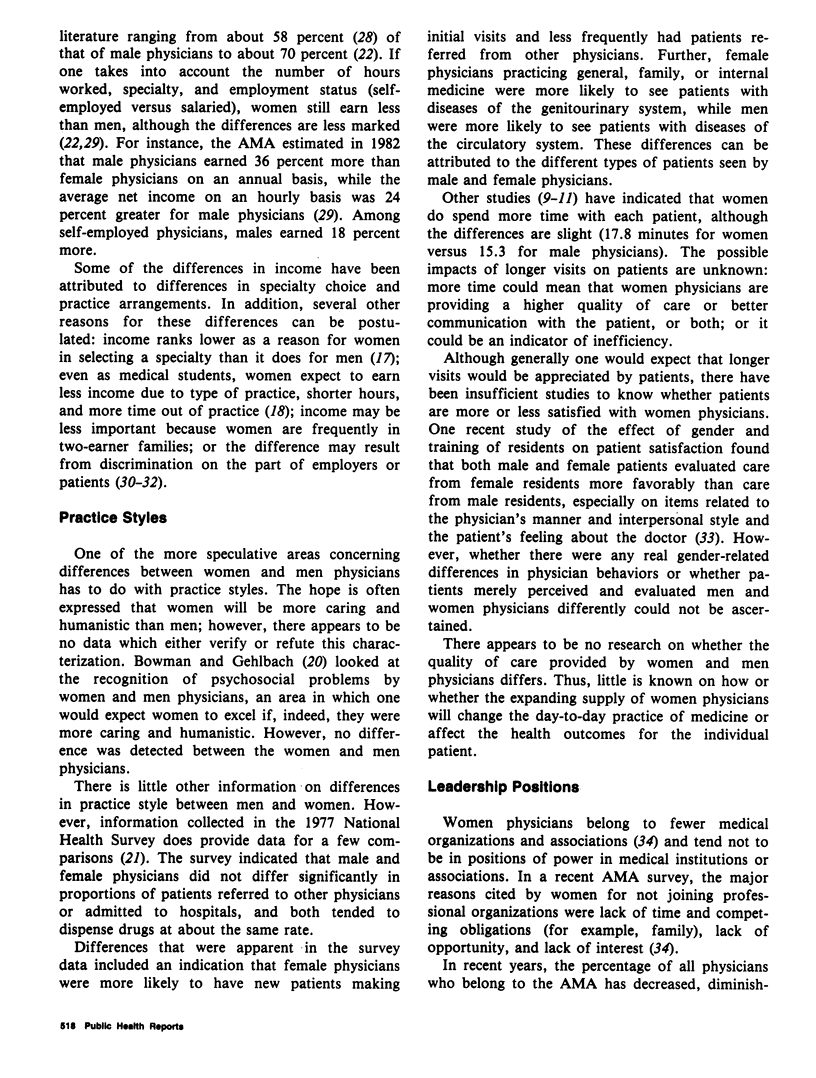
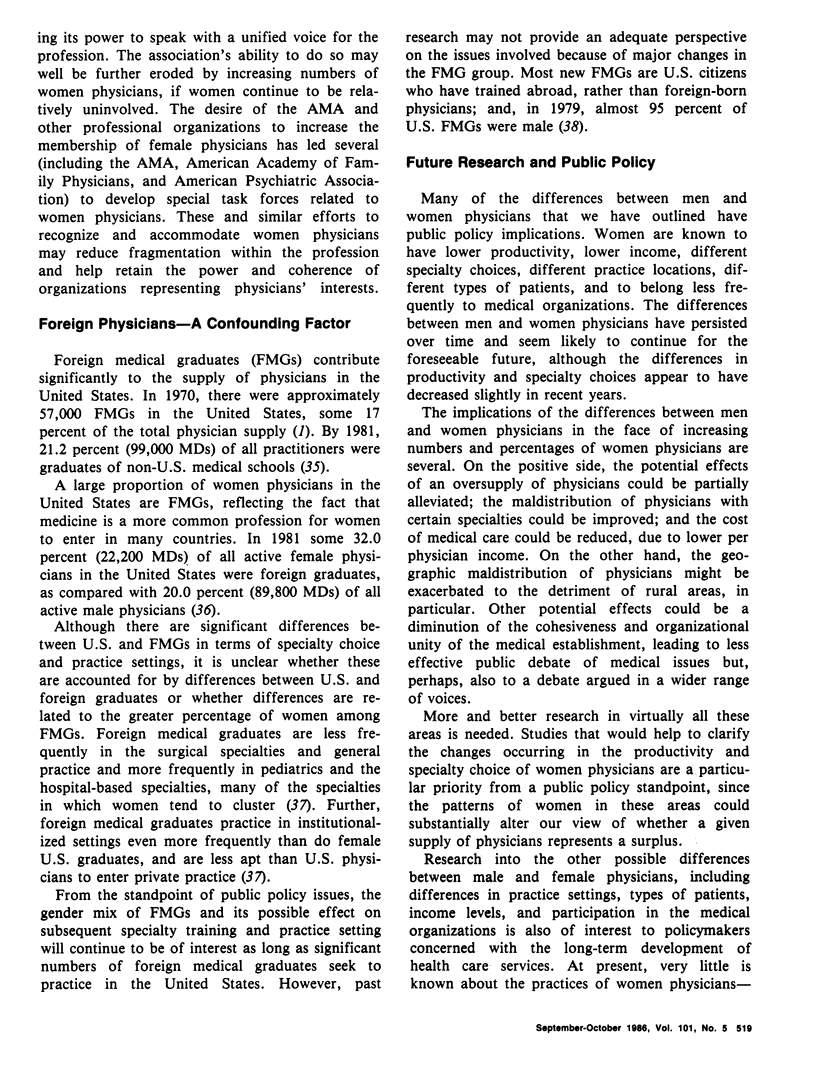
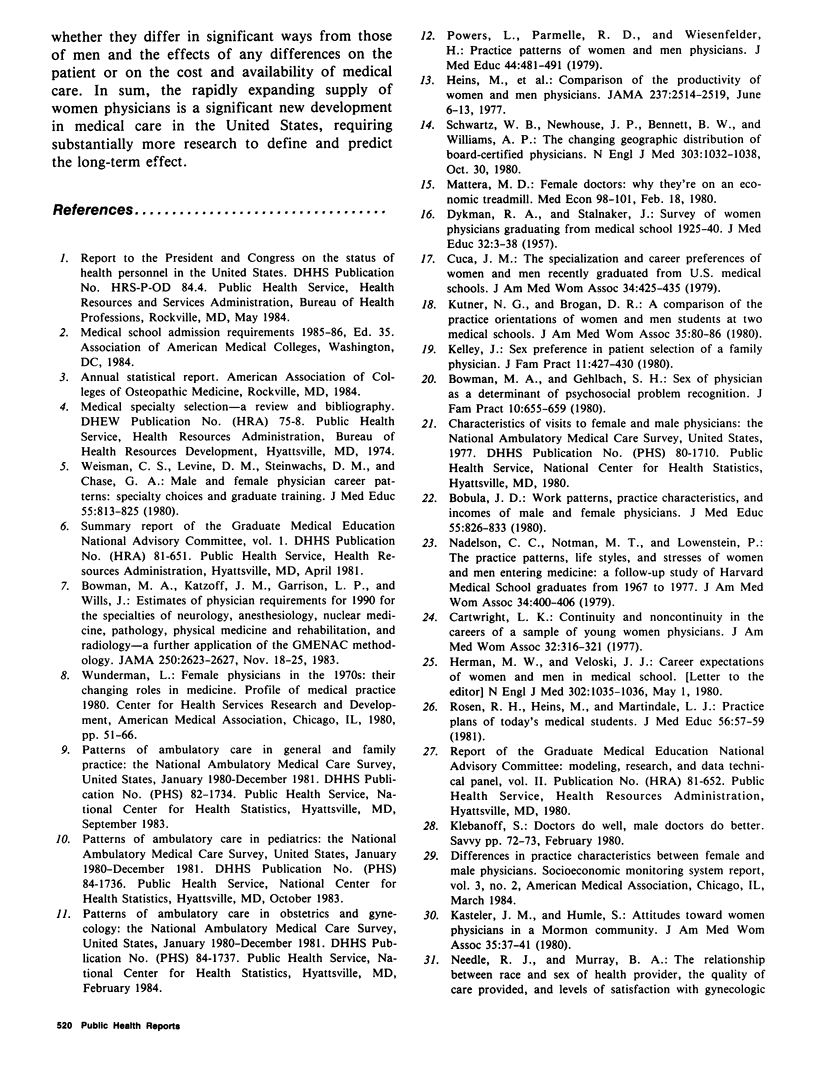
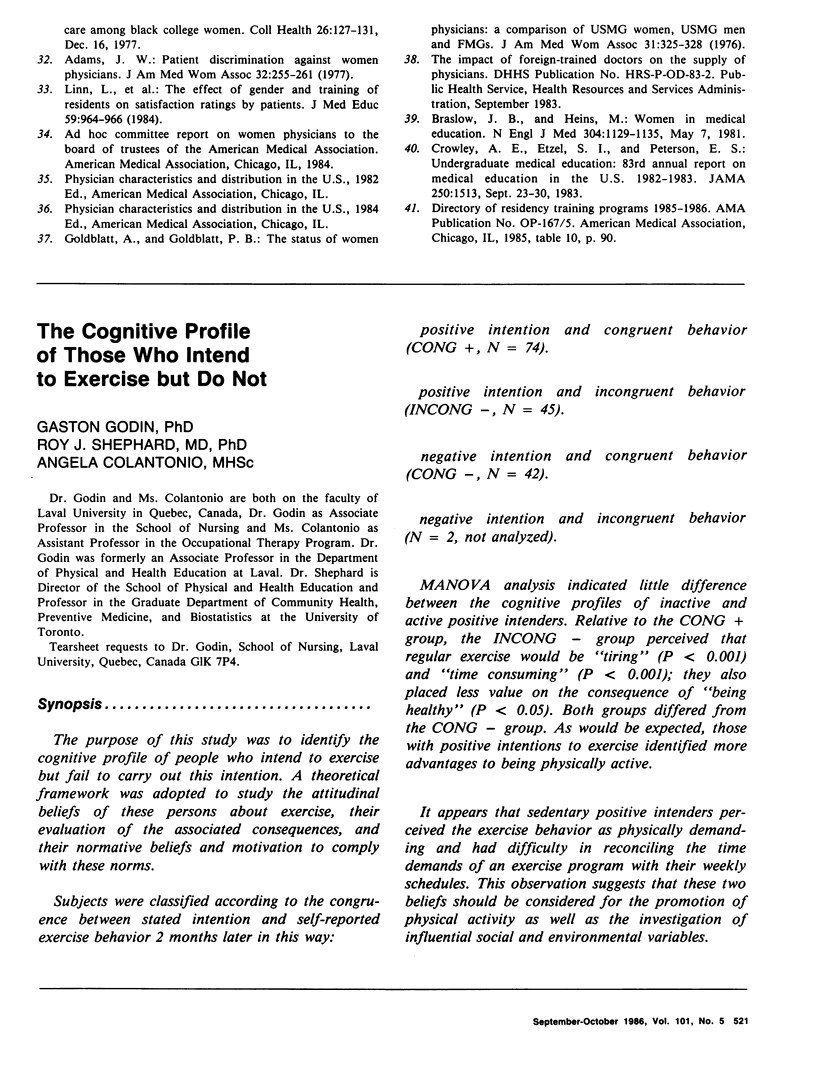
Selected References
These references are in PubMed. This may not be the complete list of references from this article.
- Adams J. W. Patient discrimination against women physicians. J Am Med Womens Assoc. 1977 Jul;32(7):255–261. [PubMed] [Google Scholar]
- Bobula J. D. Work patterns, practice characteristics, and incomes of male and female physicians. J Med Educ. 1980 Oct;55(10):826–833. doi: 10.1097/00001888-198010000-00002. [DOI] [PubMed] [Google Scholar]
- Bowman M. A., Katzoff J. M., Garrison L. P., Jr, Wills J. Estimates of physician requirements for 1990 for the specialties of neurology, anesthesiology, nuclear medicine, pathology, physical medicine and rehabilitation, and radiology. A further application of the GMENAC methodology. JAMA. 1983 Nov 18;250(19):2623–2627. [PubMed] [Google Scholar]
- Bowman M. W., Gehlbach S. H. Sex of physician as a determinant of psychosocial problem recognition. J Fam Pract. 1980 Apr;10(4):655–659. [PubMed] [Google Scholar]
- Braslow J. B., Heins M. Women in medical education: a decade of change. N Engl J Med. 1981 May 7;304(19):1129–1135. doi: 10.1056/NEJM198105073041903. [DOI] [PubMed] [Google Scholar]
- Cartwright L. K. Continuity and noncontinuity in the careers of a sample of young women physicians. J Am Med Womens Assoc. 1977 Sep;32(9):316–321. [PubMed] [Google Scholar]
- Cuca J. M. The specialization and career preferences of women and men recently graduated from U. S. medical schools. J Am Med Womens Assoc. 1979 Nov;34(11):425–435. [PubMed] [Google Scholar]
- DYKMAN R. A., STALNAKER J. M. Survey of women physicians graduating from medical school 1925-1940. J Med Educ. 1957 Mar;32(3 Pt 2):3–38. [PubMed] [Google Scholar]
- Goldblatt A., Goldblatt P. B. The status of women physicians: a comparison of USMG women, USMG men, and FMGs. J Am Med Womens Assoc. 1976 Aug;31(8):325–328. [PubMed] [Google Scholar]
- Heins M., Smock S., Martindale L., Jacobs J., Stein M. Comparison of the productivity of women and men physicians. JAMA. 1977 Jun 6;237(23):2514–2517. [PubMed] [Google Scholar]
- Herman M. W., Veloski J. Career expectations of women and men in medical school. N Engl J Med. 1980 May 1;302(18):1035–1036. [PubMed] [Google Scholar]
- Kasteler J. M., Hulme S. Attitudes toward women physicians in a Mormon community. J Am Med Womens Assoc. 1980 Feb;35(2):37–38. [PubMed] [Google Scholar]
- Kelly J. M. Sex preference in patient selection of a family physician. J Fam Pract. 1980 Sep;11(3):427–433. [PubMed] [Google Scholar]
- Kutner N. G., Brogan D. R. A comparison of the practice orientations of women and men students at two medical schools. J Am Med Womens Assoc. 1980 Mar;35(3):80–86. [PubMed] [Google Scholar]
- Linn L. S., Cope D. W., Leake B. The effect of gender and training of residents on satisfaction ratings by patients. J Med Educ. 1984 Dec;59(12):964–966. doi: 10.1097/00001888-198412000-00009. [DOI] [PubMed] [Google Scholar]
- Nadelson C. C., Notman M. T., Lowenstein P. The practice patterns, life styles, and stresses of women and men entering medicine: a follow-up study of Harvard Medical School graduates from 1967 to 1977. J Am Med Womens Assoc. 1979 Nov;34(11):400–406. [PubMed] [Google Scholar]
- Powers L., Parmelle R. D., Wiesenfelder H. Practice patterns of women and men physicians. J Med Educ. 1969 Jun;44(6):481–491. doi: 10.1097/00001888-196906000-00001. [DOI] [PubMed] [Google Scholar]
- Rosen R. H., Heins M., Martindale L. J. Practice plans of today's medical students. J Med Educ. 1981 Jan;56(1):57–59. doi: 10.1097/00001888-198101000-00010. [DOI] [PubMed] [Google Scholar]
- Schwartz W. B., Newhouse J. P., Bennett B. W., Williams A. P. The changing geographic distribution of board-certified physicians. N Engl J Med. 1980 Oct 30;303(18):1032–1038. doi: 10.1056/NEJM198010303031803. [DOI] [PubMed] [Google Scholar]
- Weisman C. S., Levine D. M., Steinwachs D. M., Chase G. A. Male and female physician career patterns: specialty choices and graduate training. J Med Educ. 1980 Oct;55(10):813–825. doi: 10.1097/00001888-198010000-00001. [DOI] [PubMed] [Google Scholar]
- Wunderman L. E. Female physicians in the 1970s: their changing roles in medicine. Profile Med Pract. 1980:51–66. [PubMed] [Google Scholar]


